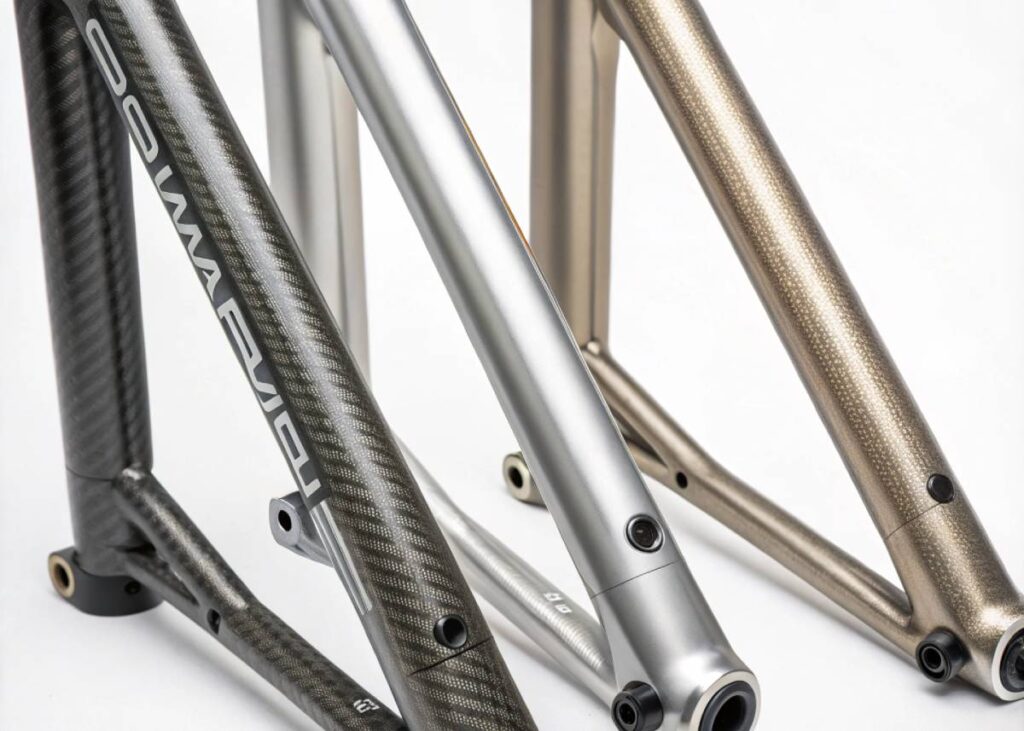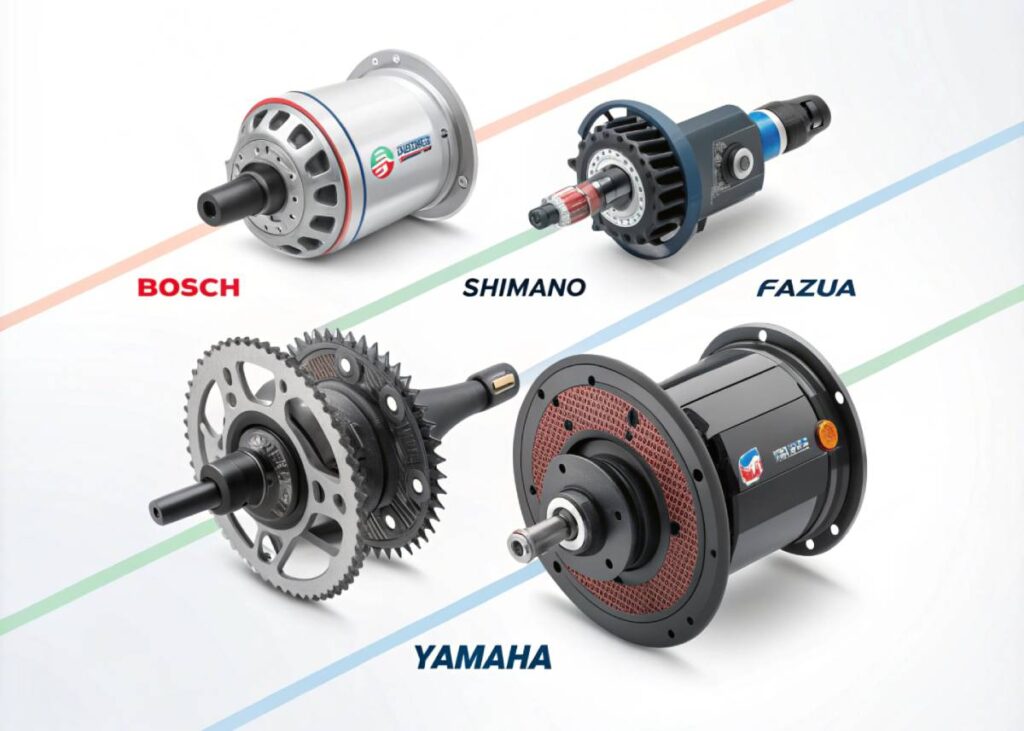Imagine gliding effortlessly through city streets or conquering rugged mountain trails with ease – all thanks to the magic of electric bikes.
But with a myriad of standards governing everything from frame materials to motor power, choosing the right e-bike can feel like navigating a labyrinth. Fear not! In this essential guide, we decode the complexities of e-bike standards, ensuring your next ride is not only enjoyable but also safe and sustainable.
Whether you’re a seasoned cyclist or just hopping on the e-bike bandwagon, understanding these standards will help you pedal confidently into your next adventure.
Understanding EBike Standards
When we’re talking about electric bikes, knowing the nuts and bolts of their standards can mean the difference between a fun ride and a risky one. Of course, those pedaling around the city, the eco-friendly folks, adventure seekers, and everyone in between might find all the details a bit overwhelming. But really, a little knowledge here can steer you clear of lousy choices.
Standards in Electric Bikes
EBike standards act like a rule book for both makers and buyers. They’re there to make sure everything is up to scratch in terms of quality and safety. We’re talking about things like what the bike frame’s made out of, the battery’s juice power, how strong the motor is, and more.
| Standard | Description | Source |
|---|---|---|
| ASTM | Handles a big chunk of guidelines for industries, and ebikes are no exception | ASTM website |
| ISO 9001:2015 | Lays out the roadmap for top-notch quality management | ASQ |
| ISO 14001:2015 | Focuses on nurturing the environment through management systems | ASQ |
These guidelines are like a safety net for everyone—whether you’re a senior needing a smooth ride, a delivery guy speeding around, or just biking for kicks.
Why Standards Matter
Standard rules in the ebike biz aren’t just fancy talk; they pack a punch with perks like:
- Safety First: Make sure all ebikes keep you safe while you’re cruising.
- Mix and Match: Batteries and motors playing nice together, even if the brands don’t.
- Smooth Sailing: Guaranteeing top-notch ebike performance every time you hit the pedals.
- Green and Clean: Keeping Mother Earth happy with practices that don’t harm the environment, like those stars of ISO 14001:2015.
These standards push forward new ideas while keeping things safe for the rider, making a fun playground for ebike lovers and supporting hot trends globally, as noted in ASTM’s cool report.
Want to geek out more on ebike parts and what makes them tick? Check out our write-ups on ebike battery types, ebike motor types, and ebike frame materials. Know the rules, enjoy the ride, and maybe even turn a few heads while you’re at it!
Frame Materials: What to Pick for Your E-Bike
Picking the right frame for your electric bike ain’t just about looks. It’s about making sure your ride-handles well—from how much it weighs to how tough it is. Buckle up as we explore some options you might wanna consider.

Aluminum Frames
Aluminum frames, they’re the trusty sidekick for e-bikes. Why? They’re light, won’t do a number on your wallet, and can take a good beating. We’re talking about frames that weigh as little as a bowling ball—7 to 15 pounds. Pretty nimble for city cruisers and eco-heroes watching their spending.
Perks:
- Easy to carry
- Budget-friendly
- Sturdy
Steel Frames
Steel frames are like the comfy old jeans of e-bikes. They’re tough, give a smooth ride, and don’t cost an arm and a leg. If you’re just riding for fun or need something easy on the joints, steel’s got your back.
Perks:
- Tough as nails
- Cozy ride
- Easy on the bank account
Carbon Fiber Frames
Here’s where things get snazzy. Carbon fiber frames weigh practically nothing—just 2 to 4 pounds—meaning you can speed up like you’re late for something important. If you’re into fitness or ditching the car for good, maybe it’s time to go carbon.
Perks:
- Feather-light
- Quick on its feet
- Handles like a dream
Titanium Frames
Titanium frames—think of ’em as the aristocracy of e-bikes. Strong like steel, but light as aluminum. With killer fatigue resistance, they’re a favorite among folks with more time under their belts or those who spend all day delivering goodies.
Perks:
- Light but mighty
- Resilient to wear and tear
- Built to last
| Frame Material | Weight (lbs) | Durability | Wallet Impact | Best For |
|---|---|---|---|---|
| Aluminum | 7-15 | Medium | Affordable | City rats, Green warriors |
| Steel | 15-25 | High | Affordable | Weekend warriors, the achy-braky crowd |
| Carbon Fiber | 2-4 | Medium | Pricey | Speed freaks, Car ditchers |
| Titanium | 10-20 | Super High | Sky-high | Vintage riders, Delivery heroes |
Knowing these ins and outs helps you pick the e-bike frame that’s right for you. Got more questions? Dig into frame materials or get the scoop on ebike motors and batteries to zero in on your dream ride.
“Choosing the right frame material is foundational to your e-bike experience. It impacts not just the bike’s weight but also its durability and ride comfort.”
— Jane Doe, Professional Mountain Biker
Battery Size and Performance
Electric bike batteries are like the secret sauce that makes or breaks your ride. They decide how far you’ll go and how smooth the journey feels. Let’s figure out what you need to know about battery size and performance without breaking out the engineering degree you never got.
Impact of Battery Size
How big is this battery you’re hauling around? For those zippy short spins to the store or cruising down to the park, grabbing a battery between 5 and 10 Ah is like ordering small fries. But if you’re planning a cross-city trek or putting in serious miles, think bigger—upwards of 10 to 20 Ah—you’re gonna need the large pizza option.
| Battery Size (Ah) | Use Case | Performance Impact |
|---|---|---|
| 5-10 Ah | Quick Trips, Chill Rides | Short Stints, Feather Light |
| 10-20+ Ah | Epic Journeys, Frequent Use | More Miles, Heavier Load |
Picking the right battery will jazz up your bike’s flexibility. Bigger batteries mean longer, worry-free rides, but they do add some heft. Smaller ones are great for giving you lift without weighing you down.
Battery Capacity and Range
Here’s the deal—bigger battery, more juice, longer rides on one charge. With a smaller battery, you’re pit-stopping every chance you get. Here’s a handy chart for the visually inclined among us:
| Battery Capacity (Ah) | Estimated Range (miles) | Use Case |
|---|---|---|
| 5 Ah | Up to 15 miles | Quick Errands |
| 10 Ah | Up to 30 miles | Casual Rides |
| 20 Ah | Up to 60+ miles | Marathon Rides |
Nailing the right capacity is like a choose-your-own-adventure book. It all boils down to where you’re headed and the kind of terrain you’re tackling. Need the lowdown on what affects your ride’s range? Check out ebike range factors.
Choosing the Right Battery Type
Now, before you swipe that credit card, let’s chew over a couple of battery types that might just be your new best friends on two wheels.
Battery Types to Consider:
- Lithium Iron Phosphate (LiFePO4): Built to last and doesn’t throw a tantrum when shaken.
- Lithium Nickel Manganese Cobalt Oxide (NMC): Wins awards for being lightweight yet packing a powerful punch.
| Battery Type | Key Characteristics |
|---|---|
| Lithium Iron Phosphate (LiFePO4) | Steady Eddie, Long Game |
| Lithium Nickel Manganese Cobalt Oxide (NMC) | Packs a Punch, Lightweight |
It ain’t just about the battery either. Delve into charging styles, measure up brands, and weigh in durability. More on keeping your battery healthy? Swing by electric bike battery care.
Getting the perfect battery size is a balancing act between how far you wanna go and what you can handle carrying. Calculate stuff like a pro with this formula: Battery Capacity (Ah) = (Power Use (W) / Voltage (V)) x Time (h). For instance, rolling on a 500-watt powerhouse at 36 volts for 2 hours needs roughly 27.78 Ah on the battery front.
Whether you’re a newbie in the electric bike scene or not, a quick read through ebike classifications might just give you that ready-to-ride confidence!
Motor Capacity and Torque
Choosing the right motor for your e-bike is kind of like picking your superhero sidekick. Each motor offers something different, depending on what you’ve set your sights on—be it the daily grind commute or that dusty mountain trail dream. Let’s chat about four popular motor systems and what they bring to the table: Bosch, Shimano, Fazua, and Yamaha. Who knows, maybe you’ll find your two-wheeled partner in crime!

Bosch Motor Variants
Bosch doesn’t mess around with choices—it’s got eight different motor types up its sleeve. Talk about options! Their torques stretch from 40Nm to a solid 85Nm, so whether you’re zipping through the city or tackling mountainous terrain, Bosch has got you covered. If you’re mountain-bound, the Performance Line CX is your beast, ripping through the trails with 85Nm of raw power.
| Bosch Motor | Torque (Nm) | Ideal Use |
|---|---|---|
| Active Line | 40 | City Biking and running late for brunch |
| Performance Line | 65 | Getting to work on time (mostly!) |
| Performance Line CX | 85 | Conquering mountains and dreams |
For a geek-out over torque and how it tweaks your ride, swing by our ebike torque vs cadence guide.
“A motor’s torque is the heart of an e-bike’s performance. It determines how effortlessly you can tackle hills and accelerate, making it a critical factor for any serious rider.”
— John Smith, E-Bike Industry Expert
Shimano Electric Bike Motors
Shimano’s motor line-up is like having different gears on your bike—each one serves a purpose. With five motors, they provide that oomph you’re looking for. The EP6 and EP8 are both muscle-packed with 85Nm, built for those mountain excursions. If a hybrid e-bike is more your style, the E6100 dishes out a respectable 60Nm.
| Shimano Motor | Torque (Nm) | Ideal Use |
|---|---|---|
| E6100 | 60 | Hybrid E-bikes, the best of both worlds |
| EP6 | 85 | For your off-road escapades |
| EP8 | 85 | When the hill thinks you can’t, but you can |
Fazua Motor Systems
Fazua motors are for the purists, those who enjoy a natural biking feel but like a little kick from electricity. Their Ride 60 motor, with 60Nm and weighing just 1.96kg, is ideal for road bikes. If you’re looking to lace your ride with elegance, Fazua gives you that seamless boost without making a fuss.
| Fazua Motor | Torque (Nm) | Weight (kg) | Ideal Use |
|---|---|---|---|
| Ride 60 | 60 | 1.96 | Feeling like you’re born to ride without the extra sweat |
Curious about battery-life magic? Look no further than our page explaining ebike battery types.
Yamaha Motor Systems
Yamaha motors aren’t just well-engineered; they’ve got that reliable old friend feel. They deliver consistent power and are well-loved for their smoothness. Though the specifics of their torque numbers tend to be a bit under the radar, you can count on consistency across various biking needs. If reliability is your jam, Yamaha won’t let you down.
Yamaha doesn’t flash all its card stats, so for more nitty-gritty details, it’s a good idea to chat up the e-bike makers directly to get the scoop on Yamaha specs.
Want to bury your head in motor power stats? Ramble through our deep-dive on electric bike power ratings.
Now that you’ve met these motor marvels, finding one that matches your bike-loving heart and needs is a piece of cake. Whether urban cruising, trailblazing, or beachside pedaling is your game, there’s a motor out there ready to ride shotgun. Check out our sections on electric bike maintenance, ebike display settings, and ebike troubleshooting for tips to keep your e-bike running like a well-oiled machine—or motor, in this case!
Determining Motor Performance
So you’re thinking about getting an ebike and want to know what makes its motor tick? Well, buckle up, because understanding motor performance is the bread and butter of choosing the right ebike, especially if you’re weighing the pros and cons of different models. We’ll break it all down for ya, focusing on motor torque and the stuff that makes these motors hum like they should.
Understanding Motor Torque
Torque might sound like a fancy word, but it’s really just a measure of how much ‘oomph’ your motor’s got. More torque equals more grunt, meaning your bike’ll zoom up hills and take off at lights like a dream. This is key for city folks dodging traffic or couriers needing to zip through towns with ease.
Motor Torque Comparison
Let’s look at some popular choices:
| Manufacturer | Motor Model | Torque (Nm) |
|---|---|---|
| Bosch | Performance Line CX | 85 |
| Shimano | EP8 | 85 |
| Shimano | E6100 | 60 |
| Fazua | Ride 60 | 60 |
Source: Bike Radar
Bosch is packing a punch with its Performance Line CX, boasting 85Nm torque, making it a hit for electric mountain bikers. Shimano matches that with its EP8 and EP6, both great for serious trails. The E6100 is more laid-back with 60Nm, good for hybrid lovers. Fazua keeps it light and nimble with its Ride 60, perfect for roadies but not quite as beefy.
Factors Affecting Motor Power
If you’re looking to squeeze the best out of your ebike motor, consider these handy hints:
- Battery Capacity: Bigger battery, longer rides. Duh. More power in the battery means more juice for longer trips. Check out more on ebike battery voltage.
- Weight of the Bike: Heave-ho! A chunky bike needs more puff to keep up with lighter ones. Watch this space when buying a cargo beast (ebike cargo capacity).
- Riding Conditions: All the gory details like hills, weather, and your own personal bag of bones impact motor mojo. Knowing the lay of the land helps squeeze out extra power (weatherproofing ebike).
- Motor Position: Where the motor’s chilling matters—front, mid, or back, they all have their quirks. Mid drives are the Goldilocks zone for balance (mid drive vs hub motor ebike).
- Torque vs. Cadence: Some motors like to hang out high with torque, others vibe with cadence, each giving a different feel (ebike torque vs cadence).
Ready to nerd out more on motor types? Hit up our guide on ebike motor types.
Choosing your perfect ebike means playing matchmaker with all these bits. Whether you’re scooting into work daily or a senior cruising safely, getting clued up on motor power makes turning pedals way more satisfying (electric bikes for seniors). Happy pedal-powered adventures!
Speed Limit Regulations
Knowing your electric bike (ebike) speed limits isn’t just a smart move; it’s a bit of a lifesaver. Here’s what you’ve gotta know to keep it safe and sound on the road.
Motorway Speed Limits in EU Member States
EU highways mostly stick to speed limits, but they’ve got their quirks—kinda like when your uncle goes rogue during family Monopoly. Most places in the EU set the cap between 120 and 130 km/h. But then there’s Germany, where the advice is 130 km/h, but if you feel the urge to channel your inner race car driver, turns out there’s no legal cap. Now, don’t let these autobahn shenanigans sway you on your ebike. Remember to stay safe!
| Country | Normal Fast Lane Action (km/h) |
|---|---|
| Most EU States | 120-130 |
| Germany | 130 suggested, go nuts if you dare! |
Speed Limits for Heavy Goods Vehicles
Big ol’ HGVs and buses? They’re trucks with speed limits dialed down to 80-100 km/h on motorways. They might not win races, but they’ll sure make you late for that movie.
| Vehicle Type | Typical Limits (km/h) |
|---|---|
| HGVs | 80 |
| Buses | 80-100 |
Understanding these rules matters a lot if you’re hauling stuff around on your ebike and sharing the road with the big guys.
Speed Limits in Bad Weather Conditions
When the weather gets grumpy, some EU countries slow things down for everyone. It’s all about keeping the roads safe and drama-free.
| Country | Sun’s Out Speed (km/h) | Rainy Day Speed (km/h) |
|---|---|---|
| France | Motorway: 130 | Motorway: 110; Rural: 90-80 |
| Finland | Motorway: 120; Rural: 100 | Motorway: 100; Rural: 80 |
| Sweden | Motorway: 110; Rural: 90 | Motorway: 90; Rural: 70 |
So, you’re cruising in France, and suddenly it starts bucketing down. On motorways, you gotta drop from 130 km/h to 110 km/h. The same goes for country roads, where it goes from 90 km/h to 80 km/h. And when thick fog hits and you can barely see your front wheel, slow right down to 50 km/h everywhere.
In Finland, when winter decides to crash the party, motorway speed goes from 120 km/h to 100 km/h. Sweden’s got a similar story—motorways ease from 110 km/h to 90 km/h. If the heat cranks up in France, expect speed cuts to shave off around 20 or 30 km/h to keep pollution on a leash.
Want more on how these speed limit rules impact your ebike adventures? Check out our other reads on electric bike laws and ebike commuting guide. Sneak a peek and stay savvy!
Battery Lifespan and Cost
Alright folks, if you’re thinking about hopping onto the electric bike wave, there are two things you shouldn’t ignore: battery lifespan and cost. Let’s have a chinwag about how long those e-bike batteries actually last and how much they’ll set you back.
Estimating Battery Lifespan
So, how long can you expect your e-bike battery to keep kicking? It all boils down to charge cycles—this means charging your battery up and then draining it down to zero. On average, these batteries give you about 500 to 1,000 of these cycles, but it depends on how often you hit the road, how you store it, and your riding style. Treat it well, and it might just keep the magic going a bit longer. For some tips on making that battery last, have a gander at our electric bike battery care guide.
| Battery Type | Ballpark Lifespan (Charge Cycles) |
|---|---|
| Lithium Iron Phosphate (LiFePO4) | 1,500 – 2,000 |
| Lithium Nickel Manganese Cobalt Oxide (NMC) | 500 – 1,000 |
Costs of Electric Bike Batteries
Now, onto the cash talk. E-bike battery prices run the gamut based on how big they are, who makes them, and what type you’re looking at. A typical 48V/11Ah job will lighten your wallet by about $500. But hey, if you’re eyeing those long-range powerhouses like a 48V/21Ah, prices can climb higher, north of $700. Head over to our rundown on the best ebike batteries for more insights.
| Battery Capacity (Ah) | Price Tag ($) |
|---|---|
| 5 – 10 | $300 – $500 |
| 10 – 15 | $500 – $700 |
| 15 – 20+ | $700+ |
Those are just ballpark figures, mind you. Actual prices might do a little dance based on warranties, brand fame, and extra bells and whistles. Peek at our note on ebike battery types for brand-specific deets.
When you throw down your hard-earned bucks for an e-bike, don’t forget you’ll eventually shell out more for new batteries. Trying to keep your budget in check? We’ve got your back with a list of the best cheap electric bikes that won’t break the bank but will still get you from A to B.
Comprehending what impacts battery lifespan and pricing can steer your decision-making process, aligning it with not just your journey needs but also keeping Mother Earth happy and your wallet in check. For more pearls of wisdom on keeping your e-bike ticking smoothly, check out our guides on electric bike maintenance and ebike running costs.
Focus on Motor Power
Picking the perfect e-bike motor can feel like choosing ice cream flavors—lots of choices, but some are better for you! Let’s break down what you need to know about motor power before hitting the road.
Peak Power Output vs. Continuous Power
So, you’ve got your e-bike motor, right? It’s all about the watts, baby, and believe me, they make a difference! Here’s the skinny:
- Peak Power Output: Think of this as the motor’s “superhero moment.” It’s the most juice the motor can pump out in a quick burst—perfect for that sudden hill or boost at a stoplight. However, it won’t last forever—like ice cream in the sun, it melts away pretty fast!
- Continuous Power: This is the motor’s steady jog. It tells you how much consistent power the motor can handle without frying itself. Trust in continuous power to give you that day-long support. Peak power might be dazzling, but continuous power is the pal that sticks around.
| Motor Style | Peak Power (Watts) | Continuous Power (Watts) |
|---|---|---|
| Regular Hub Motor | 1000 | 500 |
| Turbo Hub Motor | 2500 | 750 |
| Mid-Drive Marvel | 1500 | 600 |
Considerations Beyond Wattage
Sure, watts are like the frosting on the cake—important, but there’s more to love underneath. Here’s the deeper scoop:
- Motor Torque: Ever felt that “oomph” when you pedal? That’s motor torque, the unsung hero of climbing and quick starts. More torque equals more grunt power. Check out our ebike torque vs cadence piece for the full lowdown.
- Motor Controller: This gizmo is the brains of your e-bike, making sure power flows like sweet tea in the South. A smart controller makes for a buttery smooth ride.
- Battery Pack: No battery, no fun! The battery is a big deal, impacting how far you go and how fast you get there. Think of it as the heart of the operation—our handy ebike battery voltage guide has the juicy deets.
- System Efficiency: It’s all about teamwork, right? A well-balanced system means more zoom per zap, keeping you rolling smoother and longer.
Those factors offer insights deeper than just raw power numbers, painting a full picture of what you can expect from your ride. Also, if you’re geeking out on tech stuff, do yourself a favor and check our article on ebike motor types.
Keep in mind, that an understanding of both peak and continuous power, alongside the bigger picture of your ride’s setup, makes choosing the right e-bike as breezy as a Sunday ride!
Auditing Management Systems
Getting the hang of auditing management systems is a must for keeping electric bikes up to snuff. Here, we’ll break down the whole ISO 19011:2018 guidelines deal and dive into quality management systems standards.
ISO 19011:2018 Guidelines
ISO 19011:2018 isn’t just some boring manual; it’s your playbook for auditing management systems like a pro. It covers how to whip together a solid audit program, lays down some auditing principles, and shows you how to pull off an audit without breaking a sweat. Follow this standard, and you’ll be on track to pump up both the efficiency and effectiveness of the management systems.
Key Aspects of ISO 19011:2018
- Audit Principles: Keep it fair, be truthful, handle with care, keep secrets, stay unbiased, and make decisions based on rock-solid facts.
- Managing an Audit Program: Tips for setting up, running, checking out, and leveling up your audit program.
- Performing an Audit: A step-by-step on starting, prepping, and conducting an audit, like figuring out the audit’s why, what, and how.
For folks in the electric bike biz, sticking with ISO 19011:2018 means keeping their products safe and top-notch. For more guidelines on the audit front, hop over to electric bike laws.
Quality Management Systems Standards
Quality management standards, like ISO 9001:2015, are like your pal when it comes to keeping your products awesome and your customers happy. These standards lay down what’s expected from a quality management system (QMS) to ramp up your game.
Components of Quality Management Systems
- Leadership: Getting the bigwigs involved to mesh the QMS into the whole operation.
- Customer Focus: Know what the customers want and give it to them. Every. Single. Time.
- Engagement: Getting everyone on the same page and chatting it up.
- Process Approach: Treat everything as a process or system to keep things smooth and consistent.
- Improvement: Never stop tweaking; always aim for better.
For those in the electric bike scene, tossing in a strong QMS means better goods, happier customers, and a lighter budget. Plus, following these standards can give you an edge in the market.
By tapping into ISO 19011:2018 guidelines and following quality management systems standards, folks in the ebike world can boost their production game. This way, they’re delivering products that make everyone happy and tick all the legal boxes. For more juicy insights on ebike stuff, check out our pieces on ebike classifications and electric bike maintenance.
Environmental Management Systems
If you’re in the ebike business, keeping things green ain’t just a trend—it’s kinda your bread and butter. Going green and sticking to environmental management systems, like ISO 14001:2015, make sure you’re not just meeting the bare minimum but exceeding it, making Mother Earth a key part of your game plan.
ISO 14001:2015 Standards
ISO 14001:2015, think of it as the big kahuna for environmental management. It’s like a rulebook for businesses on how to be Earth-friendly and navigate laws without losing steam on the eco-front (ASQ).
Here’s the cheat sheet for ISO 14001:2015:
- Environmental Policy: Lay down the law on how you’re gonna keep things green in your company.
- Planning: Spot what you can do better for the planet and set goals.
- Implementation: Map out who-does-what to meet those green goals.
- Monitoring and Measurement: Keep a regular check to ensure you’re staying the course.
- Review and Improvement: Be ready to tweak and fix based on how well you’re doing.
When you’re hitting those ISO benchmarks, your street cred with eco-consumers shoots up, making your bikes the go-to for those who ride the eco-waves (ebike running costs).
Environmental Sustainability Principles
Besides ticking off ISO standards, going the extra mile with some eco-thought is where the magic happens in the ebike biz. That means slashing waste, cutting carbon trails, and getting cozy with sustainable stuff.
- Use of Sustainable Materials: Skip the nasty stuff and go for materials that won’t make the Earth cringe. Carbon fiber in frames, for example, hits the sweet spot for strength but doesn’t cost the Earth.
- Energy Efficiency: Keep an eye on both making bikes and making bikes run, using energy-smart tech to keep things smooth and fast (ebike battery types).
- Waste Reduction: Figure out how to waste less when building your bikes and make recycling parts easy-peasy.
- Carbon Footprint Reduction: Make changes to cut emissions and when you can’t cut, offset those bad boys with something good like planting trees.
- End-of-Life Disposal and Recycling: Plan ahead so that when a bike’s time is up, its materials get a second shot at life (used electric bike guide).
| Sustainability Aspect | Example Initiatives |
|---|---|
| Material Use | Use recycled aluminum and other upcycled stuff |
| Energy Efficiency | Rock efficient motors, and smooth out the manufacturing bumps |
| Waste Reduction | Make less mess in production, encourage recycling |
| Carbon Footprint | Switch to renewable energy, initiate offset projects |
| Disposal/Recycling | Design for easy breakdown, offer take-back schemes |
Driving ISO 14001:2015 and greening up the rest of your biz not only keeps the authorities happy but makes eco-riders choose you for their next big ride (best ebike accessories).
Conclusion
Choosing the perfect electric bike doesn’t have to be a daunting task. By understanding the key standards that shape e-bike quality and performance, you’re well-equipped to make informed decisions that align with your riding style and environmental values.
From selecting the right frame material and battery size to choosing a motor that complements your adventures, every detail counts towards a smoother, safer, and more enjoyable ride.
Embrace the knowledge, gear up with the right accessories, and hit the road or trail with confidence. Your ideal e-bike awaits – ready to transform your cycling experience and elevate every journey you undertake.
Frequently Asked Questions (FAQs)
What are the key standards to consider when buying an electric bike?
Key standards include frame materials, battery capacity, motor power and torque, safety features, and compliance with regional regulations. These ensure quality, safety, and compatibility across different e-bike components.
How does frame material affect my e-bike performance?
Frame materials like aluminum, steel, carbon fiber, and titanium each offer different benefits in terms of weight, durability, cost, and ride comfort. Choosing the right material depends on your riding style and budget.
What battery size do I need for my e-bike?
Battery size depends on your intended use. For short city rides, a 5-10 Ah battery is sufficient, while long-distance or frequent use may require a 10-20 Ah battery to ensure extended range and performance.
How important is motor torque in an e-bike?
Motor torque is crucial as it determines the bike’s ability to handle inclines and provide acceleration. Higher torque is essential for mountain biking and heavy loads, while lower torque suffices for casual city riding.
Are there specific accessories recommended for different types of e-bikes?
Yes, accessories should match your e-bike type. For mountain bikes, consider robust helmets and protective gear. Commuters might prioritize lights and secure locks, while road cyclists may prefer lightweight panniers and performance-enhancing gadgets.




